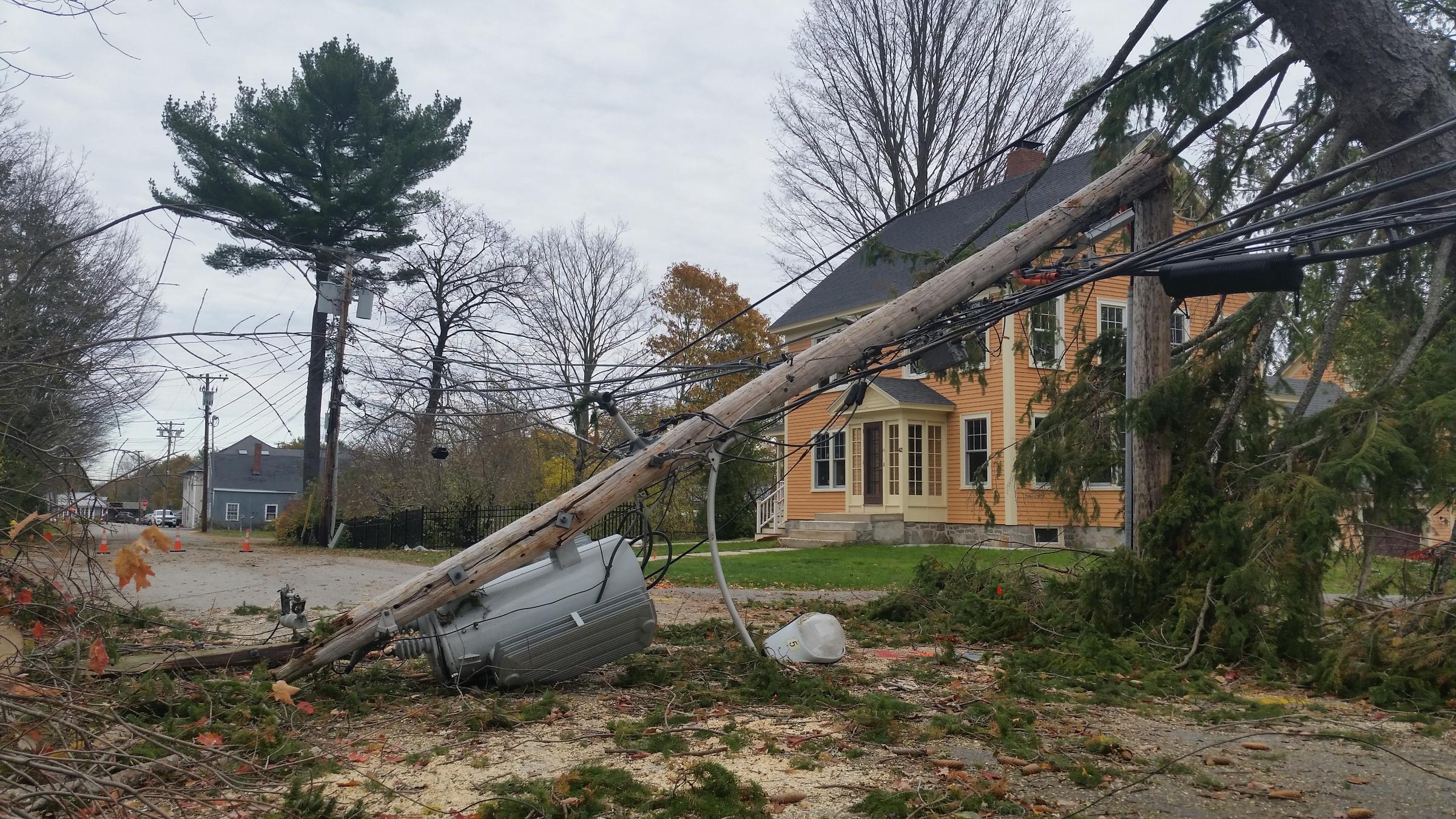
Maine electricity users endured the most frequent service interruptions and the longest outages of any state in the U.S. in 2017, according to federal reliability data.
Utility companies say that highlights the natural challenges faced here, but critics say the findings also point to the utilities’ failure to rise to the challenge.
Data compiled by the federal Energy Information Administration show Maine electricity customers in 2017 experienced, on average, more than three service interruptions — the highest rate in the country and more than double the national average. And Mainers were in the dark longer than anywhere else — on average more than 40 hours.
“It definitely affects both quality of life and Maine businesses,” said Portland attorney Todd Griset, who specializes in energy issues.
Griset called attention to Maine’s poor outage record in a recent blog post. As he notes, Maine’s worst-in-the-nation status for 2017 held up even when damage from major weather events — including that year’s devastating windstorm — was left out of the calculation.
“Unfortunately both — if you take into account major events Maine led the pack. And if you exclude major events Maine still led the pack,” he said, “significantly in excess of any other state.”
“In Maine we are challenged by geographic and weather consequences of living in our state,” said Catharine Hartnett, a spokeswoman for Central Maine Power, the state’s largest utility.
Maine is the most heavily forested in the nation, and falling tree limbs are the biggest single threat to the system’s reliability, Hartnett said.
“We take improvement very seriously, and in every possible way that’s cost-effective we look at those opportunities,” she said. “Right now, for example, we are looking at larger and more durable poles every time we have to reset a utility pole. We are also looking at stronger, better constructed wire every time we are replacing a distribution and transmission wire.”
Back in 2009, state regulators required CMP to institute a program that would ensure trees along every mile of right-of-way are trimmed every five years. And after finding that the state’s second largest utility, Emera, had failed to inspect miles of line in a timely manner, the Maine Public Utilities Commission required that company to speed up its own tree-trimming efforts.
Emera spokeswoman Judy Long said the company is now meeting those marks, and is taking other steps as well.
“Including designating an engineer whose sole focus is minimization and elimination of customer outages,” she said, “and over the last two years, since 2016, we have been identifying the poorest-performing circuits on our system and identifying some work that would improve that performance.”
Ultimately, it is state regulators who judge whether investor-owned utilities are meeting reliability standards in a cost-effective way. The PUC is reviewing CMP’s latest proposal for its charges to consumers, including a rationale for what it will do to improve reliability and how much that will cost consumers.
“We certainly are looking into this as part of CMP’s current case, and we were very proactive and direct with Emera about their poor performance in this area,” PUC spokesman Harry Lanphear said.
But he, too, said that Maine does have specific challenges in not just forest cover but also its winding coastline.
“A lot of peninsulas and areas that are served by a radial line, kind of like one line in. And if that line goes down the entire peninsula doesn’t have power. But it’s expensive to put a second line in, and that comes down to what are the ratepayers willing to pay for,” Lanphear said.
Critics argue that electric companies in many states face similarly daunting challenges, and they mostly get better results. In 2016, for instance, while Maine was also the worst or near worst performer on the reliability metrics, forested neighbors Vermont and New Hampshire were not in the top five.
Even within Maine, in the aftermath of the 2017 windstorm, two consumer-owned utilities — Kennebunk Light and Power and Eastern Maine Electric Co-op — restored service long before the for-profit utilities.
State Rep. Seth Berry of Bowdoinham, a vocal critic of Central Maine Power who will co-chair the Legislature’s utility oversight committee, is promising a hard look at the issue.
“It leaves ratepayers between a rock and a hard place. Either we get lousy power or we pay through the nose to get acceptable power. And it is absolutely the responsibility of the Legislature and the incoming governor to look at that and consider whether that’s really the system that makes sense going forward,” he said.
Some critics are advocating a public takeover of Maine’s privately held poles and wires. Recent reports show that nationally, public power companies’ reliability record significantly beats the for-profit companies and the national average.
Berry declined to comment on whether an effort to create a public electricity distribution authority in Maine might be afoot in Augusta.
New federal data on Maine’s outage record for 2018 should become available in the spring.
This article appears through a media partnership with Maine Public.
This article originally appeared on www.bangordailynews.com.







